Using AI Apps to Build Learning and Teaching Resources

Notes from a quick demo for the TechDem COP by Jo Kay, 28 February 2023.
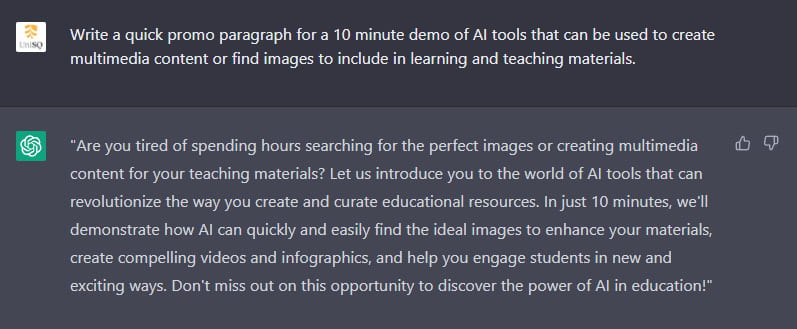
https://openai.com/blog/chatgpt/
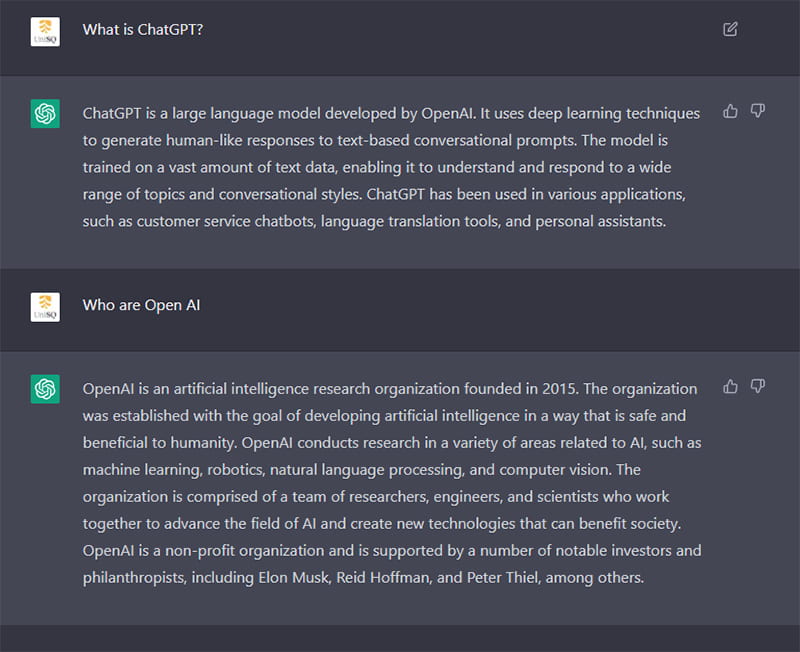
Finding Images
AI generative are generated by artificial intelligence algorithms rather than being created by humans. These algorithms use complex mathematical models and machine learning techniques to generate new images that resemble certain styles or patterns.
Lexica Aperture – https://lexica.art/aperture
An image search / generator that produces realistic images from simple text input. Based on the ‘Stable Diffusion model’.
Costs: Free to generate up to 100 images per month. Pro accounts starting at $8US per month.
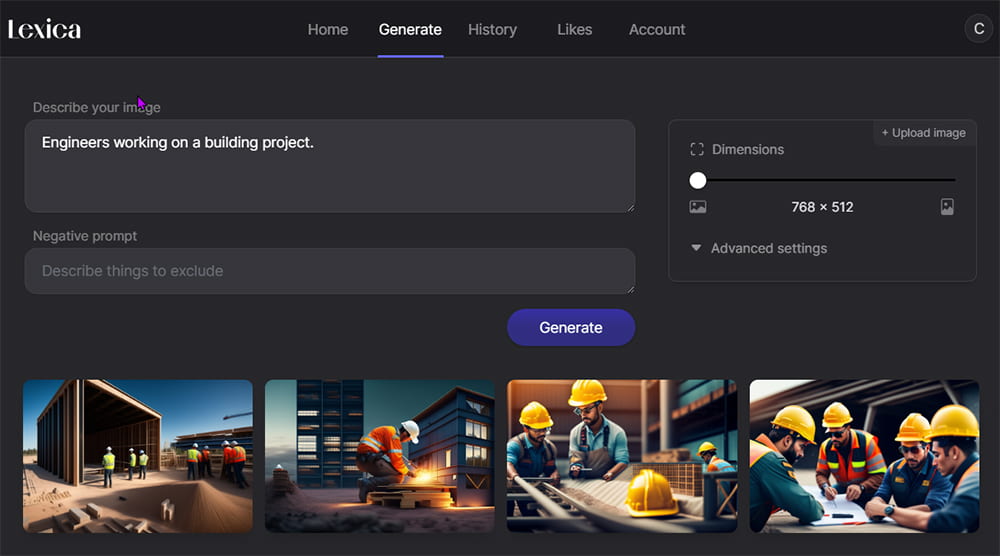
Dall-E – https://labs.openai.com/
Dall-E uses a neural network that has been trained on a dataset of images and their corresponding textual descriptions. Unlike other image-generating AI models that can only modify existing images, DALL-E is capable of creating completely new images from scratch, based on textual input.
Costs: 50 Free credits on signup and 15 credits per month after that. You can purchase additional credits.

Creating Charts and Infographics
There are several AI-powered infographic makers available online that can help you create professional-looking infographics quickly and easily. These tools offer a wide range of templates, design elements, and customization options to help you create a visually appealing and informative infographic.
Venngage – https://venngage.com/
An AI-powered infographic maker that offers a range of templates, icons, and design elements to help users create infographics quickly and easily.
COSTS: Free Account with up to five projects that you can link to. Pro accounts starting at $19US per month for full features.
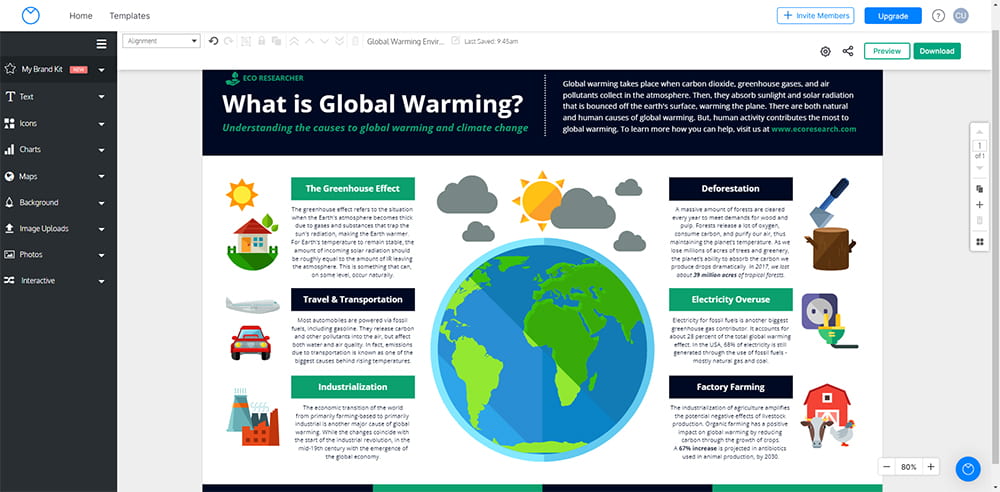
Infogram – https://infogram.com/
An AI-powered app that offers a range of chart types, maps, and other design elements to help users create interactive and data-driven infographics. It includes integrations with popular data sources such as Google Sheets and Excel, making it easy to create dynamic visualizations.
COSTS: Free Account offered with limited number of projects and download options. $19US per month to use the full suite of tools and download in multiple formats.
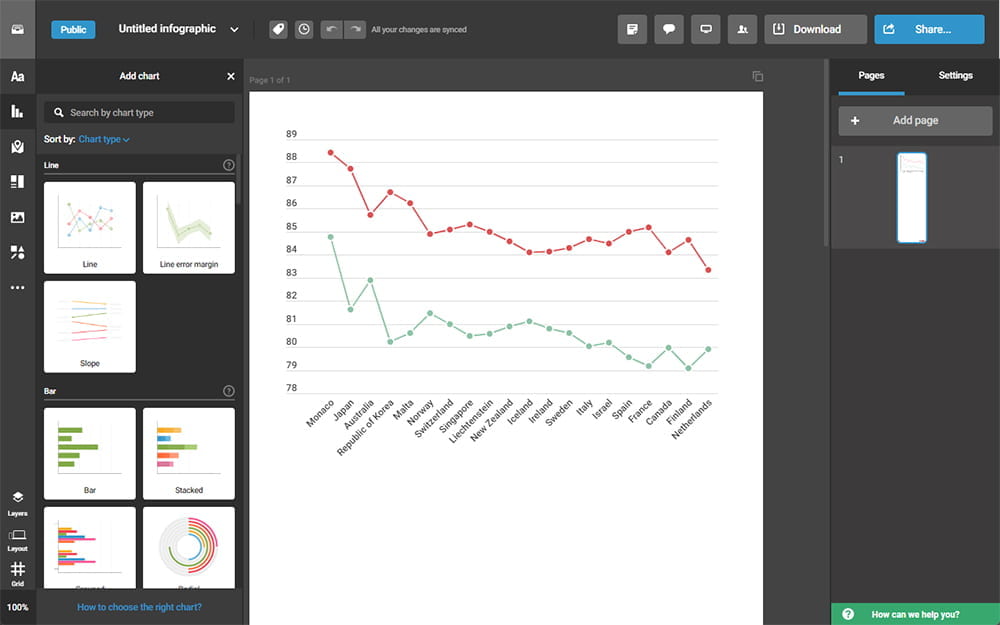
Making a Video
There are several AI-powered tools and platforms available that can help you create videos using machine learning algorithms and computer vision techniques.
Synthesia – https://www.synthesia.io/
Synthesia is an AI video generation platform that enables you to quickly create videos with AI avatars, in over 120 languages. It includes templates, a screen recorder, a media library, etc.
Costs: $30 US per month.
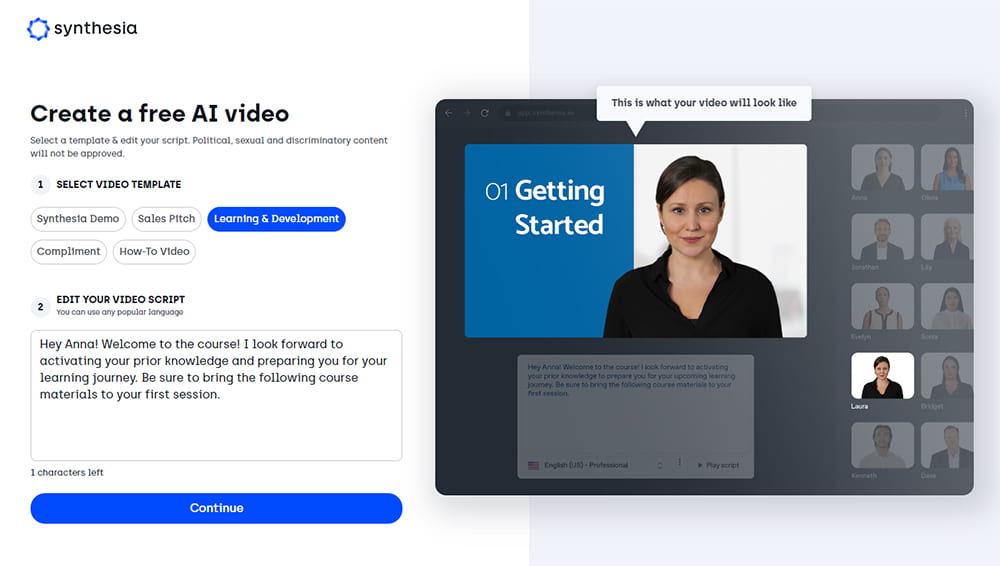
D-ID.com – Creative Reality Studio – https://www.d-id.com/creative-reality-studio/
D-ID uses generative AI to create customized videos featuring talking avatars. It includes tools to generate a script, add sound and even use your own audio recordings and mages.
Costs: Free for 14 days, then starting at $5.99 US per month.
Challenges and Considerations
As with any emerging technology, it’s important to carefully consider the potential challenges and limitations of AI-generated text before implementing it in any context.
Issues to consider include:
- Quality: The quality of AI-generated text can vary widely depending on the specific algorithm and training data used.
- Bias: Like any machine learning algorithm, AI models used for generating text can be biased based on the data they were trained on. This can result in text that reflects and reinforces existing societal biases.
- Plagiarism: If an AI-generated text is too similar to an existing work, it could potentially be seen as infringing on the original author’s copyright.
- Misinformation: AI-generated text can be used to spread false or misleading information, either intentionally or unintentionally. This is a growing concern as the technology becomes more widely available.
- Context: AI-generated text may not always take into account the broader context in which it will be used, which can lead to errors or misunderstandings.
- Ethical concerns: The use of AI-generated text raises a range of ethical concerns, including issues around privacy, data protection, and the impact on employment in industries such as journalism or content writing.
The legal landscape around AI-generated images is still evolving, and there may be other issues to consider depending on the content created and where it will be published.
Issues to consider include:
- Ownership: In many cases, the AI algorithm used to generate an image will be owned by a particular individual or organization. As such, they may have rights over the images produced by that algorithm.
- Originality: If the AI algorithm is designed to replicate existing images, there may be questions around whether the resulting images are sufficiently different from the originals to be considered original works themselves. In other words, if the AI-generated images are deemed to be too similar to existing works, they could be seen as infringing on the original author’s copyright.
- Derivative works: If the AI-generated image is based on an existing copyrighted work, the resulting image may be considered a derivative work. This could potentially infringe on the original author’s copyright, depending on the specific circumstances.
Are you experimenting with AI to make learning and teaching resources?
Join the discussion! Add links to tools you’ve discovered below, or share your tips and tricks!


0 Comments